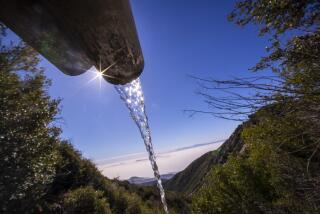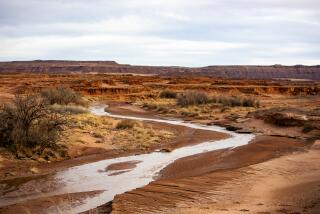Arizona Water Customers May Delay Payments
- Share via
TUCSON — In a move that could save hundreds of farms from bankruptcy, the U.S. Department of the Interior has tentatively agreed to give Central Arizona Project customers an additional year to begin repaying $2.3 billion for the water delivery system.
The announcement follows a year of intense haggling among agencies including the U.S. Department of Reclamation, which built the project, and the Central Arizona Water Conservation District, which is responsible for repaying the federal government for its construction, state officials said.
Arizona Gov. Fife Symington called the agreement “a critical first step in resolving some of the financial difficulties facing agriculture water users in Arizona.”
The 336-mile-long CAP canal system brings Colorado River water to central and southern sections of the state. It has been swimming in problems in recent years largely related to faulty assumptions made long ago about how its water would be distributed and paid for, Arizona Water Resources Department Director Betsy Rieke said.
Among those assumptions was that agriculture would be its largest customer for the next 20 to 30 years, Rieke said Thursday.
“Basically, we have a project premised on the assumption that agriculture would be able to use the bulk of the water in the early years,” Rieke said. “The original assumptions of the project--who would use it and pay for it--were not viable.”
Postponing the start of CAP repayment is expected to give customers additional time to restructure CAP water allocations and debt burdens to help bail out farmers and avoid large water rate hikes for home owners and businesses in Phoenix and Tucson.
“This delay is a joint federal and state determination that driving farmers and irrigation districts out of business is not in anybody’s best interest,” Rieke said.
More to Read
Sign up for Essential California
The most important California stories and recommendations in your inbox every morning.
You may occasionally receive promotional content from the Los Angeles Times.











